The Asia-Oceania Federation of Obstetrics and Gynaecology (AOFOG) Congress drew over 1,400 participants this year. A big focus of the AOFOG Congress in Busan in 2024 included tackling the issue of violence against women. In line with the 1 billion dollars pledged by the Australian Government, it has never been a timelier effort. It saw Prof Pisake Lumbiganon , immediate past President, delivering a critical plenary lecture on tackling the toughest challenges in women’s health, a call to action in Asia and Oceania, as well as the AOFOG declaration on violence against women. The Congress also saw the inauguration of the new AOFOG President, Dr John Tait, who became the first President of AOFOG from New Zealand. Representing Australia and New Zealand, it was a privilege to witness these highlights at the Congress.
At a conference of this scale, it can sometimes be daunting and challenging to initiate conversations with professionals from different countries. Being recipients of the Mizuno-Ratnam Young Gynaecologist Award (YGA) for Australia and New Zealand, we had the unique opportunity to attend the Community Fellowship Program prior to the Congress and make meaningful connections with colleagues around the world. We were very privileged to be two of 16 YGAs from Asia and Oceania participating in this program. Our program started on the 13th of May 2024. Our days were filled with a mixture of healthcare facility tours, lectures on innovation in healthcare delivery and Korean cultural experiences. Our leader, Professor June Park from Seoul National University Bundang Hospital, graciously took time from her clinical responsibilities to guide us, despite the staffing challenges caused by the junior doctors’ strike in Seoul at that time. We are deeply grateful for her dedication and leadership throughout the program.
A cultural shift
Our first two days focused on maternity care. We started at the Seoul National University hospital, one of the leading medical schools in the country. We heard about the change to a new competency based medical teaching model and curriculum. We were introduced to their fantastic simulation centre, which took up an entire floor. Noelle, an advanced birthing simulator was available to be used, which was something we were familiar with in Australia and New Zealand. The facility also included a medical museum displaying various fascinating artifacts. As professionals in our field, we were particularly excited to see an ancient pair of forceps on display!
After an amazing Korean spread for lunch, we then moved on to a public health centre in the Eunpyeong district. Here they talked to us about various public health initiatives with a focus on making parenthood more appealing to families. We learnt that South Korea has the lowest fertility rate in the world. The reasons are multifactorial but include a cultural shift of choosing not to have children. Initiatives to support parenthood in South Korea’s challenging demographic context include providing taxi vouchers to make transport easier for parents to commute between clinic appointments and meet up with other parents for playdates were presented to us. It was so interesting seeing the needs of a different country and how their public health team combatted their unique challenges.
Our second maternity focused day started at the Asan Medical Centre where we were shown maternal fetal medicine facilities and received a talk on fetoscopic procedures carried out in the centre. We then moved onto the Samsung Medical Centre, a private hospital. Most of us were familiar with the electronics brand but we learnt that this expansive medical complex, that looked more like a small town than a hospital, was funded by donations from the tech giant. Here, we saw a dedicated maternity centre for international consumers. People would travel from other countries to give birth in this medical centre, and the outpatient and inpatient facilities are state of the art.
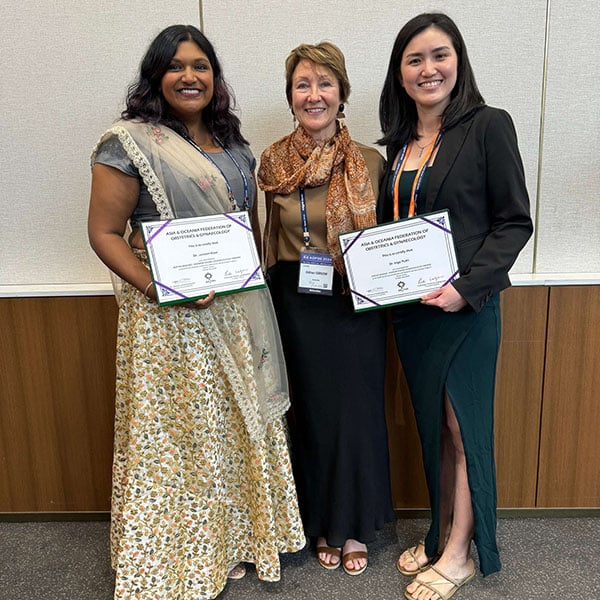
Dr Jasveen Kaur (left) and Dr Inge Putri (right) with President Dr Gillian Gibson
A deeply enriching experience
On the third day of the Community Fellowship Program, we visited another privately owned hospital, Severance Hospital. We listened to a lecture on the development of the gynae-oncology service, including the concept of a hospitalist. This is a specialist ward gynaecologist whose job is solely to manage ward and post-surgical patients to improve efficiency of the service. Severance Hospital is one of the oldest and biggest university hospitals in Korea, which has more than 2,400 inpatient beds across five hospitals: the Yonsei Cancer Hospital, Rehabilitation Hospital, Cardiovascular Hospital, Eye and ENT hospital, as well as Children’s Hospital. We were pleased to know that since the Da Vinci installation in 2005-2022, 64,200 cases have been performed in total, including the use of single port Da Vinci system in the treatment of endometrial cancer, including lymph node dissection.
We also visited the Maria Clinic, a centre providing assisted reproductive technology treatment. In the clinic, the consult room was set up in such a way where patients are able to have their first consult as well as a hycosy ultrasound done in the same visit (if appropriate). In Korea, in an attempt to support reproduction due to the country’s low fertility rate, we were intrigued to learn that the South Korean government funds up to 25 IVF cycles for couples that are seeking assisted reproductive techniques. An enlightening question and answer session with the director of the clinic showed us just how varied access to assisted reproduction is in the different AOFOG countries.
On the final day, we visited Seoul National University Bundang Hospital, where there is a dedicated building for simulation. We were able to have first-hand experience in the simulation centre and were able to get our hands on the laparoscopic simulators and laparoscopic box trainers, using the articulating laparoscopic instruments. Medical students and residents were taught caesarean sections using a virtual reality experience. Our Community Fellowship Program was concluded by a cultural visit to the Korean Folk Village where we enjoyed watching a traditional Korean Folk Dance.
We then travelled to Busan for the AOFOG Congress academic program. Before the conference started, we were invited to the President’s Night along with all the other YGA recipients. Here, we met the AOFOG executive team and leaders of other national O&G societies across the Asia-Oceania Federation countries. We were presented our Young Gynaecologist Awards and were treated to a dance and song performance by two of our talented YGA colleagues from Nepal and the UK.
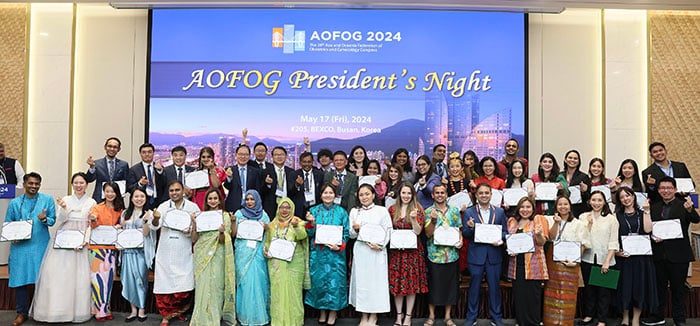
Young Gynaecologist Award recipients from across the Asia-Pacific at the AOFOG President’s Night
We both left South Korea feeling very grateful and privileged to have this opportunity to attend the Community Fellowship Program and the AOFOG Congress. We were able to exchange ideas and share our experience of an Australian and New Zealand perspective to group-based discussions. Other than learning and sharing our experience, this also gave us an opportunity to network with other YGAs from other countries. We are thrilled that we could represent RANZCOG and enjoy this enriching experience. We eagerly anticipate more opportunities like these in the future and are excited to see what Australia can offer for the next Community Fellowship Program before the Sydney AOFOG Congress in 2026.
Dr Jasveen Kaur and Dr Inge Putri participated in the 2024 AOFOG Congress and Community Fellowship Program courtesy of the RANZCOG Mizuno-Ratnam Young Gynaecologist Award, as supported by the RANZCOG Women’s Health Foundation.


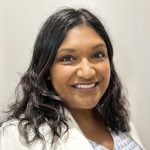
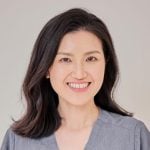
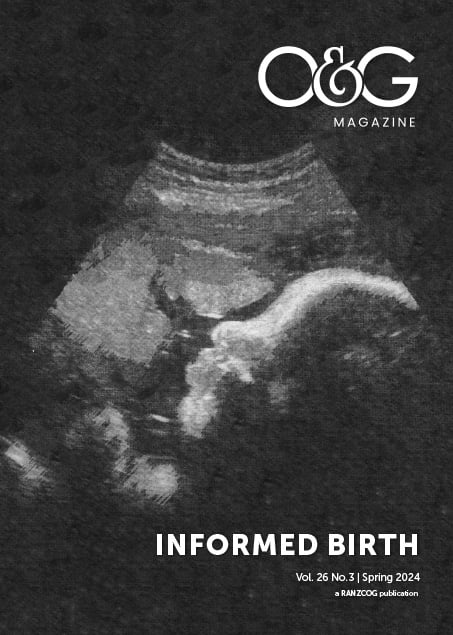


Leave a Reply